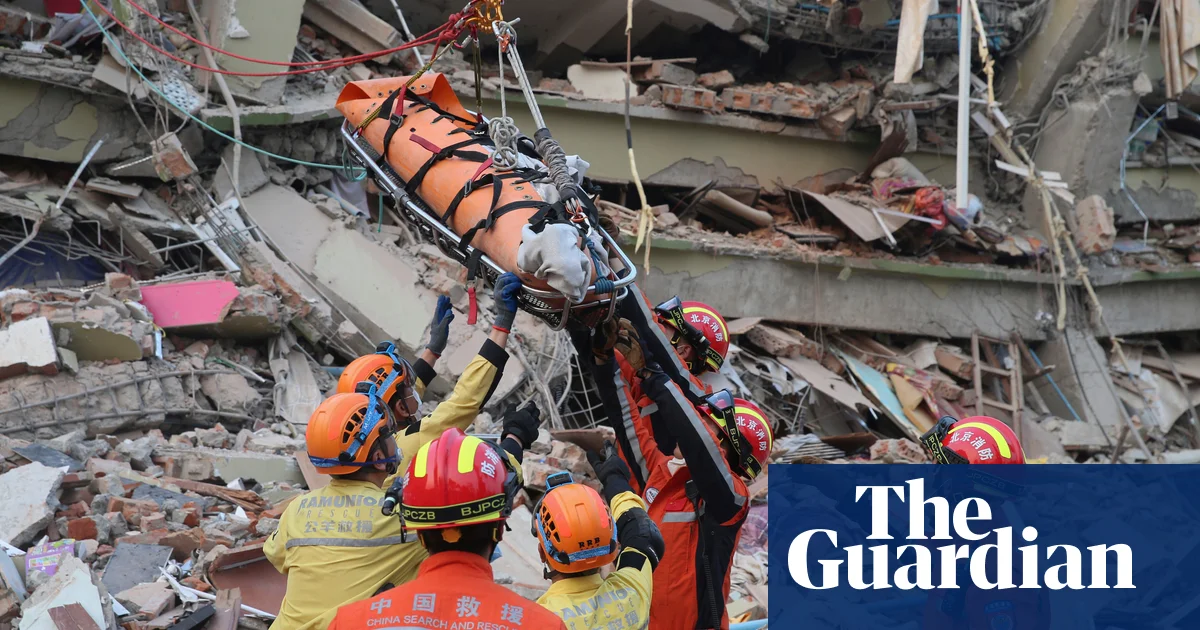A woman trapped beneath the remains of a hotel building for nearly 60 hours after a devastating earthquake struck Myanmar was pulled alive from the rubble on Monday, officials said, in a rare moment of hope for rescue teams scrambling to find survivors.
Rescuers, many of them unequipped volunteers, have spent days trying to free people from buildings collapsed following Friday’s huge earthquake, which killed more than 1,700 people in the country and at least 18 in neighbouring Thailand.
It’s feared the true scale of the damage is yet to emerge. The International Committee of the Red Cross has called it the most devastating earthquake Asia has experienced in over a century.
In the early hours of Monday there was a brief moment of relief, when rescue workers carried a woman from the rubble of the Great Wall Hotel in Mandalay after a five-hour operation, according to the Chinese embassy in Myanmar. China is among several countries that have sent aid and personnel to assist in rescue efforts.
A video showed onlookers clapping as the woman was carried away on a stretcher. She was reported to be in a stable condition, the embassy said.
Across central Myanmar rescue teams have scrambled to free people from beneath countless collapsed buildings. Homes, religious sites, schools, universities, hotels and hospitals have all been damaged or destroyed.
On Sunday, workers rushing to find survivors at an apartment complex in Mandalay, freed a pregnant woman who had been trapped for two days, amputating her leg in order to free her. However she was pronounced dead shortly afterwards. Many more are feared trapped beneath the 12 storey building complex.
Rescue efforts also continued in the Thai capital Bangkok, where 76 workers are believed to be trapped under a 30-storey tower that collapsed while under construction.
Across central Myanmar, emergency teams have been hampered by a lack of equipment, with some rescuers using their bare hands to search for the missing. Power and communication outages, damaged roads and bridges have also complicated their work.
The US Geological Service’s predictive modelling estimated Myanmar’s death toll could top 10,000 and losses could exceed the country’s annual economic output.
Foreign assistance began to arrive over the weekend, following a rare request by Myanmar’s isolated junta for international help. China and Russia, two allies of the junta, have sent aid and personnel, while India, Thailand, Malaysia and Singapore have also sent assistance.
The US has also pledged $2m in aid “through Myanmar-based humanitarian assistance organisations”. It said in a statement that an emergency response team from USAid is going to Myanmar.
The earthquake struck just as many humanitarian agencies were cutting back projects in Myanmar following Trump’s cuts to USAid.
The country was already in crisis before the disaster, due to a spiralling conflict triggered when the military seized power in a coup in 2021. The junta is facing an armed resistance to its rule, formed of civilians who took up arms to fight for the return of democracy, and ethnic armed organisations that have long fought for independence.
It has lost swathes of territory, and responded with relentless airstrikes, which continued even after the devastating quake, including in Sagaing, close to the epicentre.
Rights groups have said aid must go through community based groups or the National Unity Government, which was founded by elected law makers and activists to oppose the coup.
“The junta is notorious for weaponizing aid, and even launched airstrikes shortly after the quake. Sending aid to the junta will only make things worse,” said Debbie Stothard, the founder of Altsean-Burma, a network of human rights organisations in south-east Asia.
